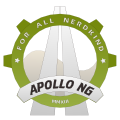TAG: development
| 2013-02-04 12:20 | chrono | |
| 2013-01-15 10:14 | chrono | |
| 2013-02-11 11:01 | chrono | |
| 2013-01-30 14:13 | chrono | |
| 2012-03-30 21:38 | chrono | |
| 2015-04-06 11:02 | chrono | |
| 2012-04-26 07:44 | chrono | |
| 2016-12-13 19:56 | chrono | |
| 2016-03-21 22:25 | chrono | |
| 2014-07-01 07:59 | chrono | |
| 2012-02-18 18:16 | chrono | |
| 2013-06-09 09:49 | chrono |
Trace:
